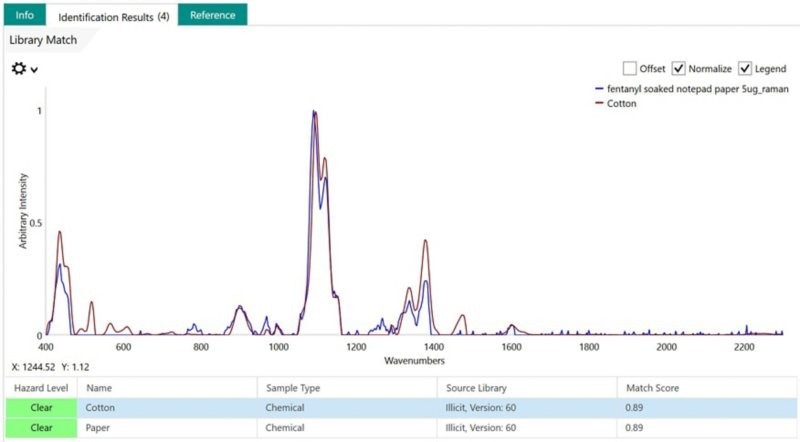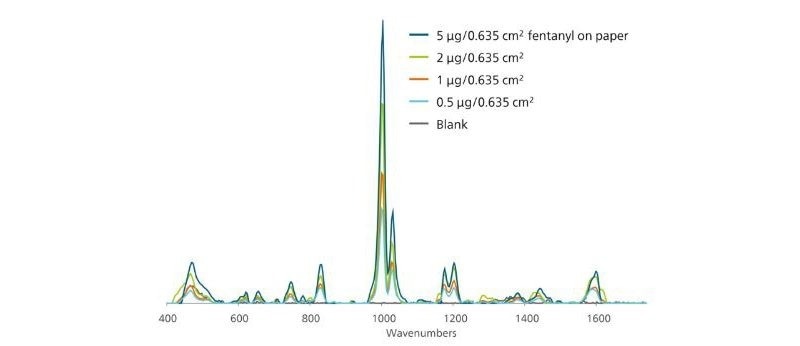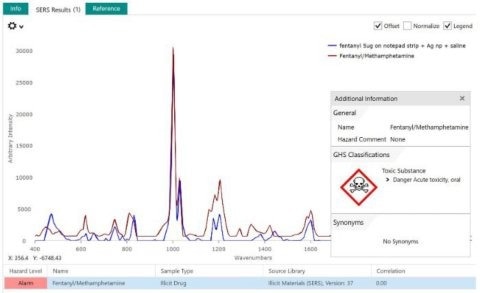Sponsored by Metrohm AGReviewed by Olivia FrostOct 26 2023
The US Bureau of Justice declared that over half of state prisoners and nearly two-thirds of sentenced prison inmates satisfied formal drug dependence or abuse criteria from 2007 to 2009.

Image Credit: salarko/shutterstock.com
Drugs illegally enter prisons inside baby diapers, body cavities, bibles, and the mail.
If stationery is treated with a concentrated solution of LSD, MDMA, heroin, or fentanyl, small pieces of a letter can be easily distributed among inmates. Narcotics in prison mail is such a significant problem that millions of dollars are being invested into reworking the system.
One potential solution is digitizing each piece of mail, but it presents many challenges, including being time- and resource-intensive. It also does not protect digitizers from harmful mail content, as well as potentially violating the rights of the inmates.
It is a complex issue, complicated even further by fentanyl. For anyone handling laced mail, mere exposure to trace amounts of fentanyl can be toxic, and death caused by a fentanyl overdose is a problem on both sides of the bars.
As a result, an ideal solution would be implementing a fast yet accurate and efficient detection system that can test for the presence of drugs on paper at the point of receipt.
Metrohm Raman offers excellent trace-detection solutions with both MIRA and MISA XTR DS systems with SERS capabilities. Such systems can be employed for the instant onsite detection of cocaine, MDMA, opioids, and fentanyl.
This article presents the Raman analysis of fentanyl-soaked paper and the SERS detection range for fentanyl on paper. A real-world example of fentanyl identification is also provided.
Raman and Fentanyl-Soaked Paper
The direct point-and-shoot analysis of notebook paper at a fentanyl concentration of 5 μg/ 0.635 cm2 results in a spectrum of substrate material, discovered to be paper and cotton, as shown in Figure 1.
This is a typical restriction encountered when using Raman alone for trace analysis applications, but this challenge is addressed by using Metrohm's MISA and MIRA systems with dual Raman and SERS capabilities.

Figure 1. Fentanyl-soaked paper requires SERS for trace detection, while Raman simply identifies the substrate. Image Credit: B&W Tek
SERS Detection Range of Fentanyl on Paper
An experiment was conducted to demonstrate SERS detection of illicit drug-laced mail. Firstly, notebook paper was cut into squares of 0.635 cm (0.25 inch).
Following the preparation of a stock solution of 0.1 mg/mL fentanyl in methanol, this solution was deposited onto the squares in volumes of 1 μL, 5 μL, 10 μL, 20 μL, and 50 μL to produce 0.1 μg, 0.5 μg, 1 μg, 2 μg, and 5 μg of fentanyl per 0.635 cm2 of paper.
Each square paper was dried and placed into a glass vial, and 500 μL of silver colloid was added. This vial was capped, shaken, and rested for five minutes to improve extraction. The addition of a saline solution (100 μL of 0.9%) was made and the vial was gently agitated to mix.
This mixture was measured with the ID Kit OP on MIRA XTR DS after one minute, and the results are presented in Figure 2.

Figure 2. Strong SERS signature of fentanyl is detectable even at 0.5 ug—far below the typical dose of fentanyl in the real world. Image Credit: B&W Tek
SERS Method and Results

Image Credit: B&W Tek
SERS delivers rapid on-site identification of fentanyl in laced mail in four basic steps, as displayed in Figure 2. These steps are as follows:
- A small sample of the suspect paper is removed.
- Active compounds are extracted by shaking the paper sample in a vial with colloids.
- Saline solution is added to the vial.
- Data is acquired using ID Kit OP on MIRA or MISA.
The results demonstrate an unambiguous identification of fentanyl.

Figure 3. Positive ID of Fentanyl with GHS hazard warning. Image Credit: B&W Tek
Conclusion
Metrohm Raman’s dual functionality MIRA and MISA Raman and SERS systems are an ideal solution for real-world problems such as fentanyl-laced prison mail.
These systems facilitate a reduction in the risk of exposure to deadly substances, as well as saving money, time, and personnel commitments without sacrificing the ability to positively identify narcotics in non-technical settings.

This information has been sourced, reviewed and adapted from materials provided by B&W Tek.
For more information on this source, please visit B&W Tek.